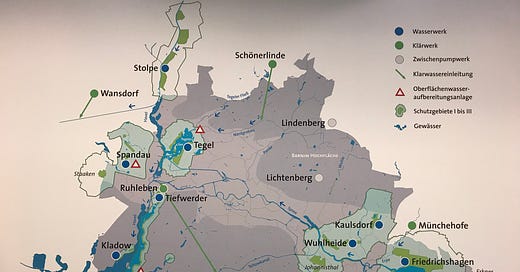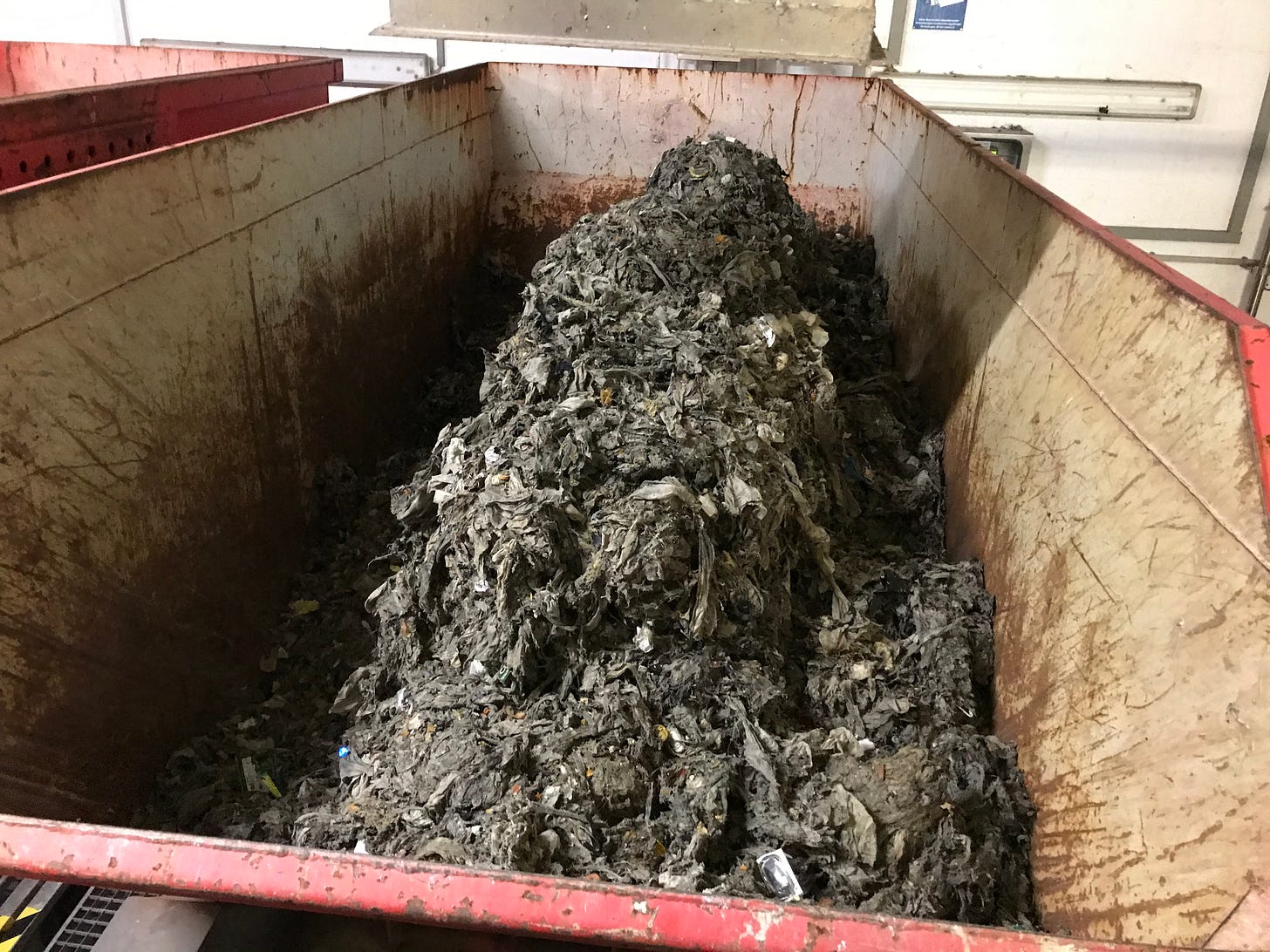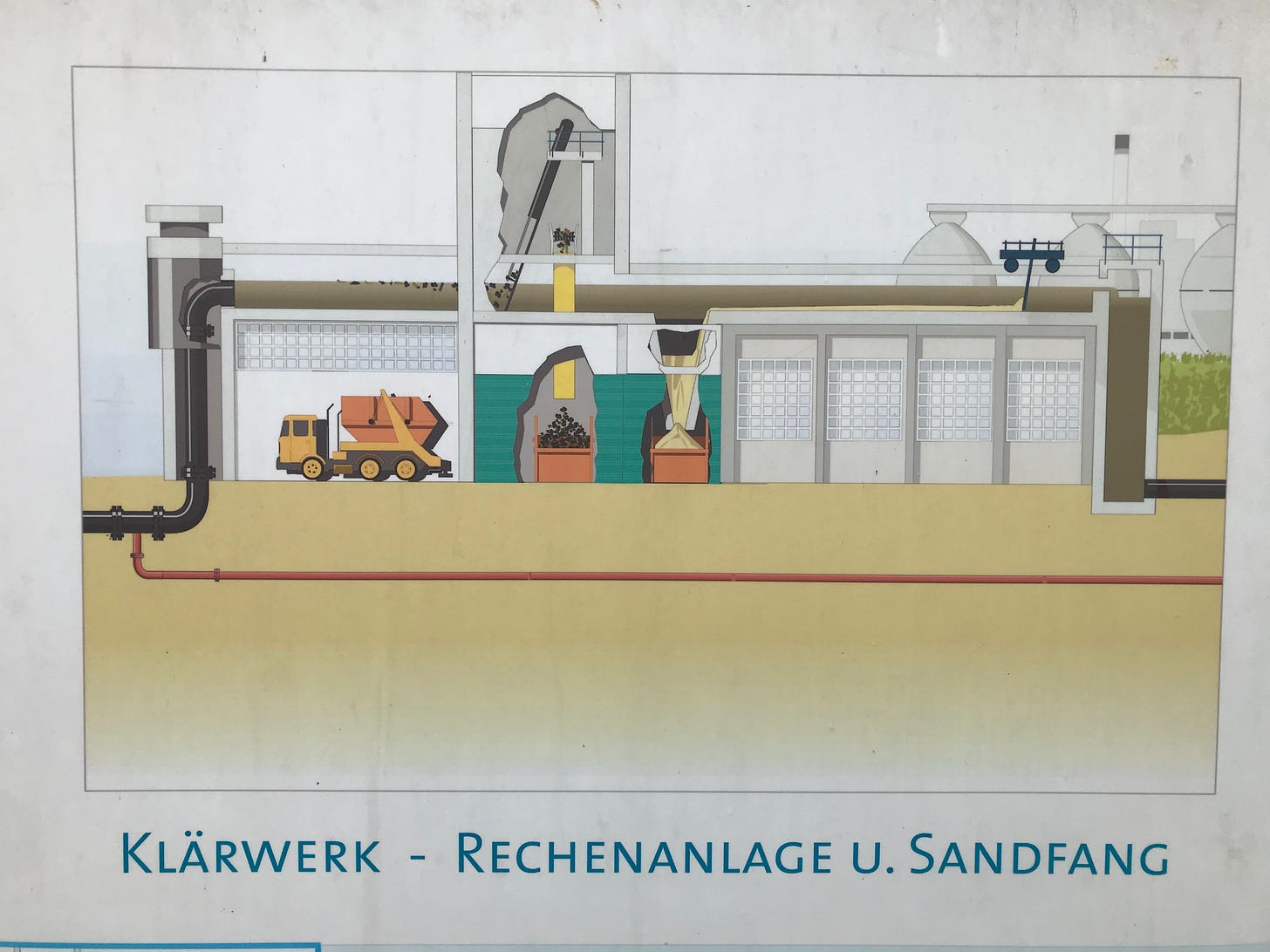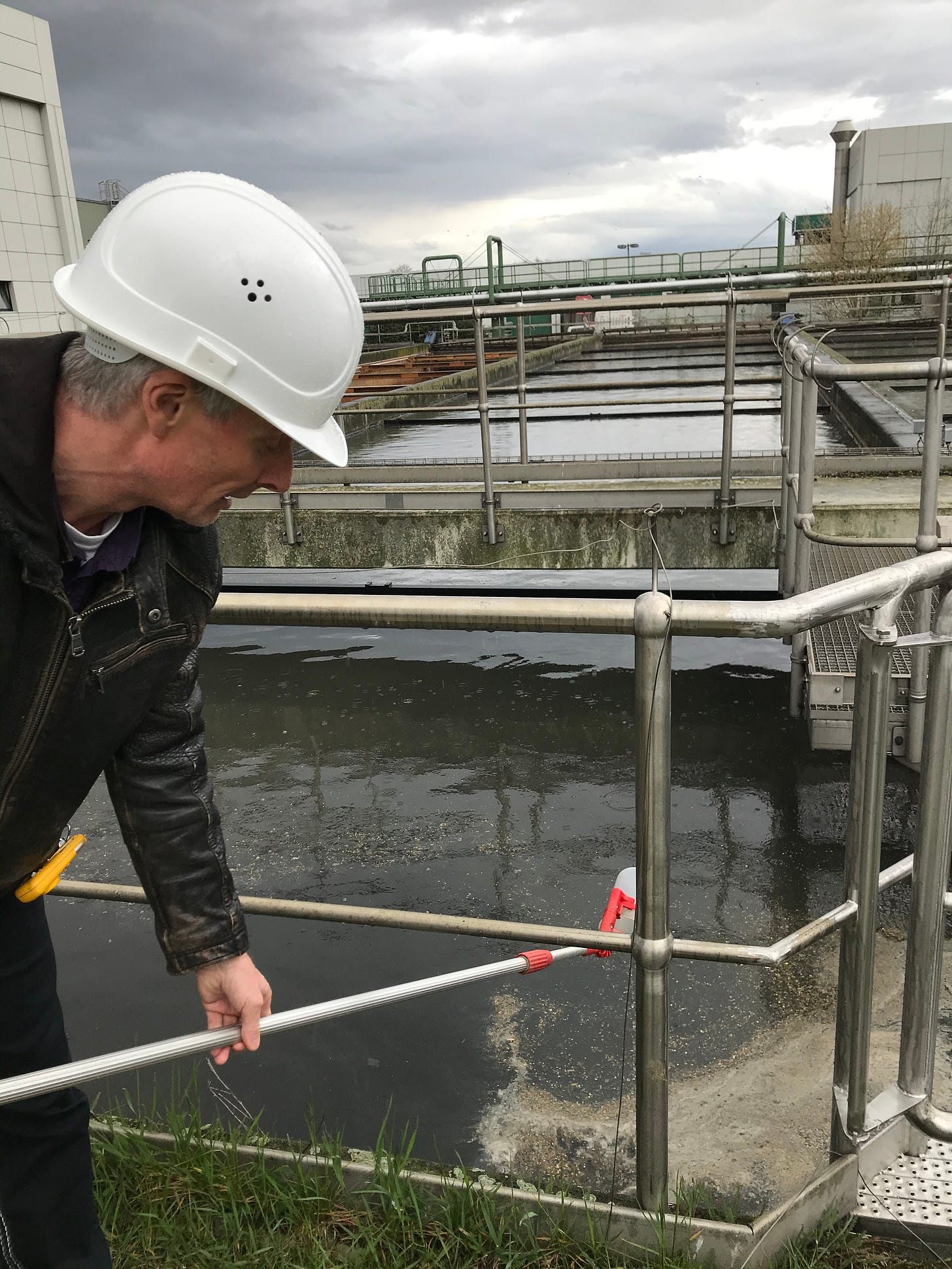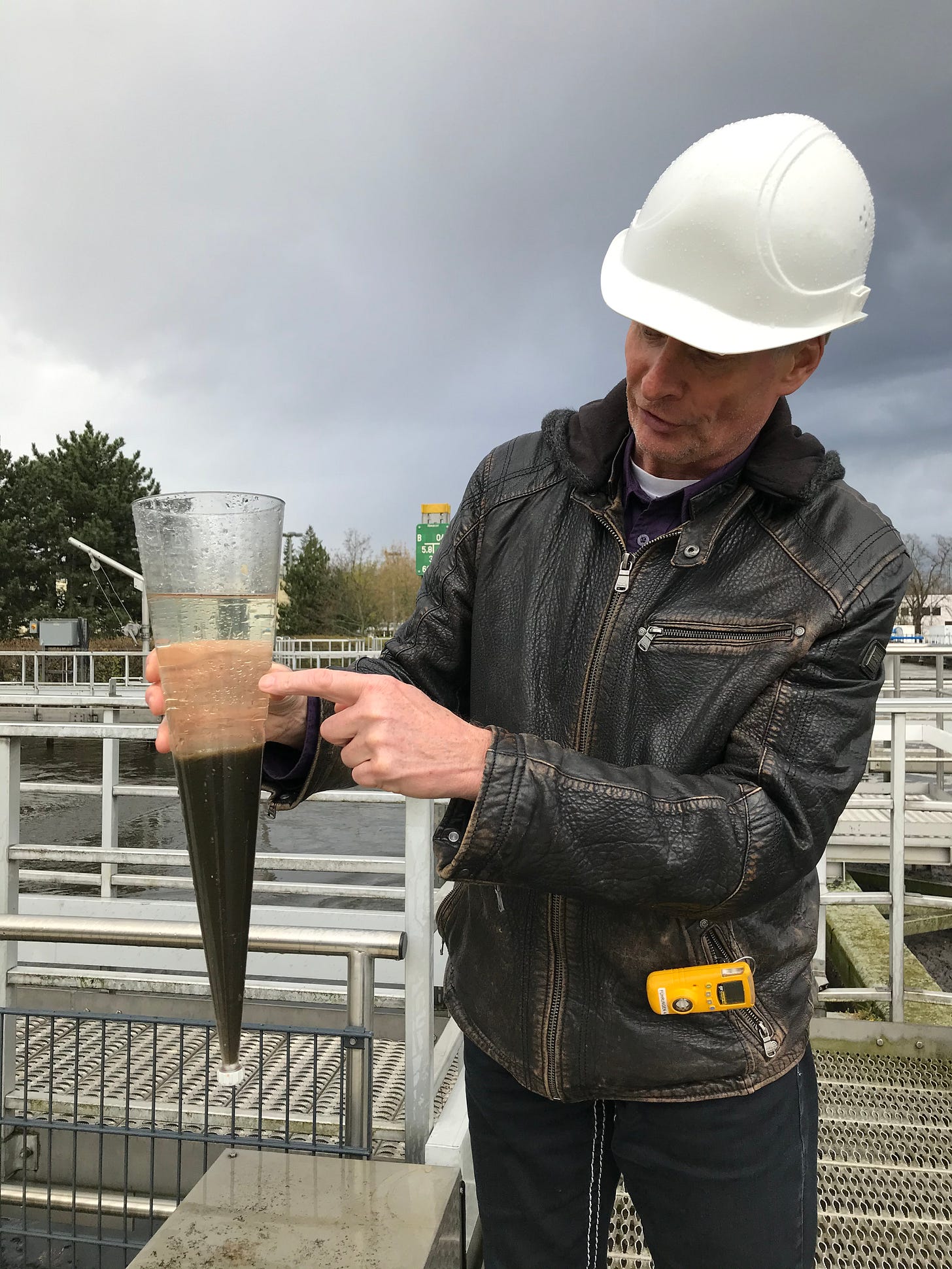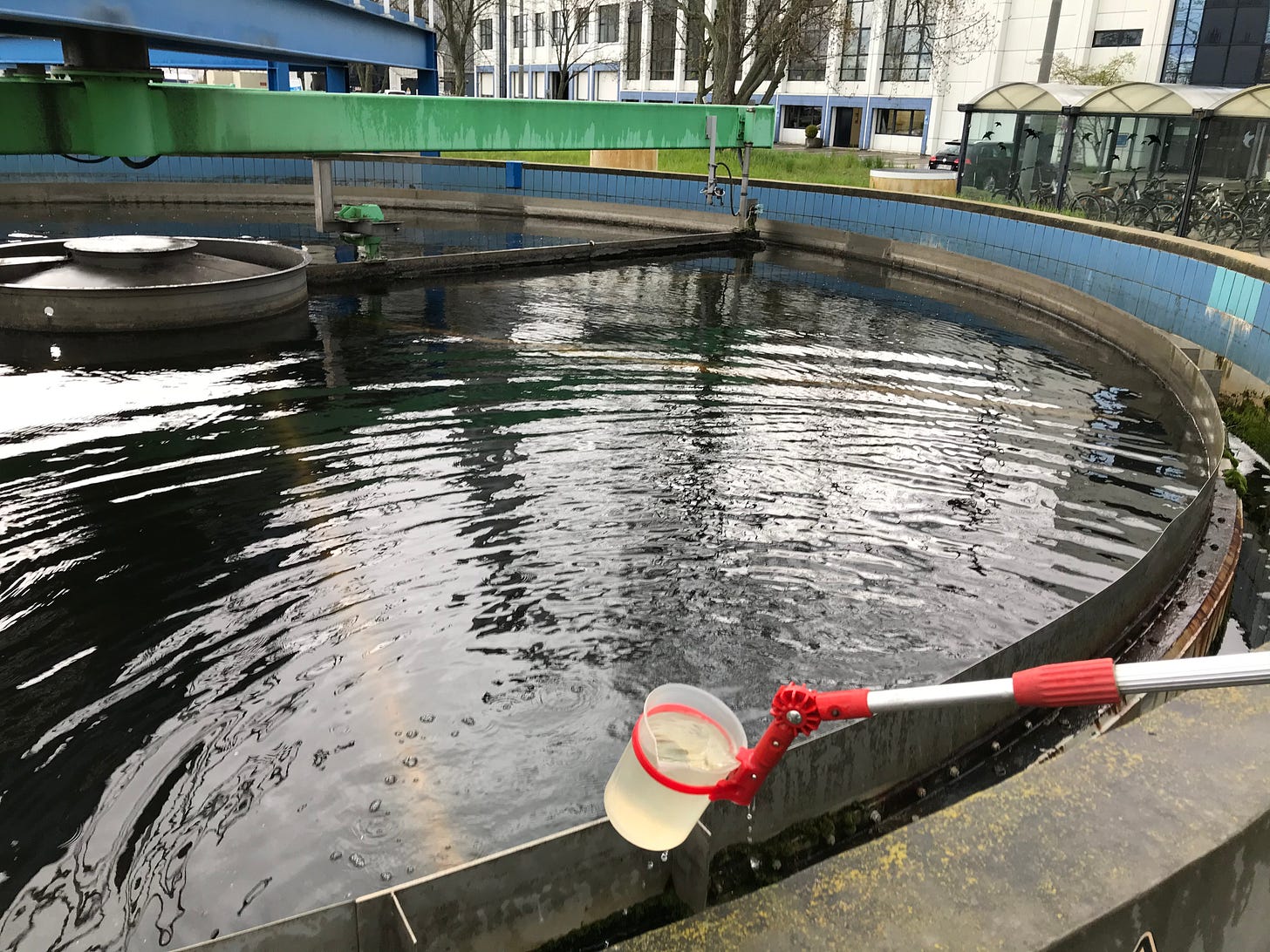2. Journey of a POOP : from Flush to Fluss
What happens when you flush your poop or pee down that water hole in your toilet ? In most cases, it ends up in the Fluss — river for German.
In the best case scenario — the poop is treated before it enters the river
In the worst case scenario — it by passes the treatment and just ends up floating in the rivers (a reality in many of the developing countries)
So I made some attempts to follow the journey of poop from flush to fluss.
Last week, I went to the biggest sewage treatment plant in Berlin in an attempt to understand how the city takes care of its shitty business. And the very fun, amazing and wonderful Arne Kuczmera, who spent the last four decades working at the facility showed me around and explained with utmost patience and kindness how the shit from each household, restaurant, office and other places ( where people release themselves in Berlin), travels through the 164 pipelines, covering a distance of 9,700 km to be treated and eventually drain down in the river of Berlin — the Spree.
Well, to begin with Berlin hosts six Sewage Treatment Plants (STP) dotted around the periphery of the city.
We are talking about the green dots in the above image.
The facility I visited —Ruhleben, once used to be a horse racing field, situated in the west of Berlin. Before this plant came up in the early 1960s, the West Germany dint have any Sewage Treatment Plant (STP). With time, and increasing population of the city, the STP expanded slowly. Today, this facility is treating about 600,000 cu. m. each day, serving almost 3,80,000 customers.
In about four steps, the liquid waste that reaches this plant, is washed and cleaned and purified to be released in the river Spree, which flows at the back of the Ruhleben building.
My first question to Arne was : What keeps Berlin clean ?
Arne made it sound like a cakewalk : A big lot of microorganisms.
Most of the organic compounds like Phosphorous or Nitrogen etc. is taken care by several type of super tiny organisms. And other complex compounds are taken care by advanced technologies like passing the water through UV rays or active coke etc.
Arne : The waste water that comes from the households is treated in this facility for about 24 hours before it is cleaned and released in the river.
I : Is that enough ? Is 24 hours enough ?
Arne : 24 hours is okay. The more the better. However, these facilities function 24 hours, 7 days a week, never stopping, need a lot of energy to keep running. So, we try to achieve a fair quality of water — which can be easily fetched within 24 hours.
I : So, STPs are like essential services ?
Arne : Genau ! ( exactly )
Then Arne took me around the plant, from one corner to the other, passing big machines, moving around pungent smell, walking by dark colored smelly water stored in big pond like structures.
For the first step in the process, we walked into a building. As soon as Arne opened the door, a severe stench sprinted out and hit our noses. We anyway walked in and Arne pointed at a big machine which looked like an assembly line kept horizontally. A bar was moving up and down carrying a lot of filth. I tried to look closely. There was plastic, some food scraps, tissue paper and some things better not disclosed.
Arne : The primary step in the sewage treatment is to segregate the solids from the mixture of waste that ends up here. This process is generally called screening.
I : What kind of solids ? You mean poop ?
Arne with a big smile and a little discomfort to say poop, continues : Yes, poop. But other things too. Like toilet paper, like wipes, and other things which should not be there. Because the drains that carry the toilet waste also carries the kitchen waste, and hence the screening process ends up generating a lot of waste.
I : How much ?
Arne : Like 2-4 containers each day. Each weighing about 7 - 8 tonnes.
At this point, Arne was a bit irritated.
Arne : I have been trying to inform the locals since decades. They must not throw anything in the toilet other than toilet paper, poop and pee. But, we continue to face this problem. Other things not meant for the toilet, clogs our system and needs cleaning of the machines, raising the costs of treating sewage.
After the screening process, the liquid is slowly passed through a giant tunnel like system which allows the sand and other particles to settle down. This sand is then collected in another chamber in another container.
At this point, I was curious.
I : What happens to these solids, Arne ?
Arne : A truck comes everyday and takes these containers to a different facility, where these solids are incinerated.
I : And why is it needed to be transported to a different place ? Cannot it be burnt down here ?
Arne : Yes, it can be. But we lack the technology here. And we do not want to pollute the city air too.
I am not sure, but if you look at the above image closely, perhaps you will be able to see the container collecting solid waste, another container collecting sand and the sewage water that comes in and goes out of this system.
Post this, the by-product of this process — a super dark liquid is passed through other underground tunnels and collected in open spaces to settle down and for the microorganisms to take care of it and produce sludge.
In the next step, this water is exposed to aerobic and anaerobic digestion by the microorganisms. Look at the image below. The right side of the tank where the bubbles are active (as oxygen is fed into the system) is part of aerobic digestion — meaning the microorganisms are chewing and eating up the remaining sludge in presence of oxygen and the stable water shows the absence of it.
Arne : Here we allow the waste to sit for some time. And you see clear water after some hours.
As clear as Arne shows in the next picture.
Water then travels to a big giant circular pond where it further sits until it comes out cleaner. As Arne shows, it looks clean enough.
Clean enough. But not enough to be used as drinking water yet.
Arne : There could still be many pollutant in this water, including heavy metals. To get rid of such pollutants, we introduced the UV system in 2011 at this STP. Since then the water is further passed through quick UV lights to take care of other heavy metals and contaminants. Every year when summer arrives, from April to September, the Berlin municipality mandates the sewage water to be treated by UV, so that the people of the city can indulge in water sports, interact with the river Spree at a better level.
After this step, the water is released into the Spree via other underground channels.
Arne : Rivers have their own self cleaning technology. So when the water from the STP meets the river, it gets treated by the natural forces as it travels with it.
The tour ended. But left me with many many many questions. Like what happens to the sludge ? Do we need clean water to clean the sewage water ? How much energy is needed to keep such a big plant active for all round the clock.
Don’t worry ! I asked Arne all these questions and many more questions and Arne patiently explained everything. But let me talk about them in the next episode.
Hope you enjoyed this shitty letter :)
Will drop by your mail box, next week.
Till then enjoy your week and weekend.

